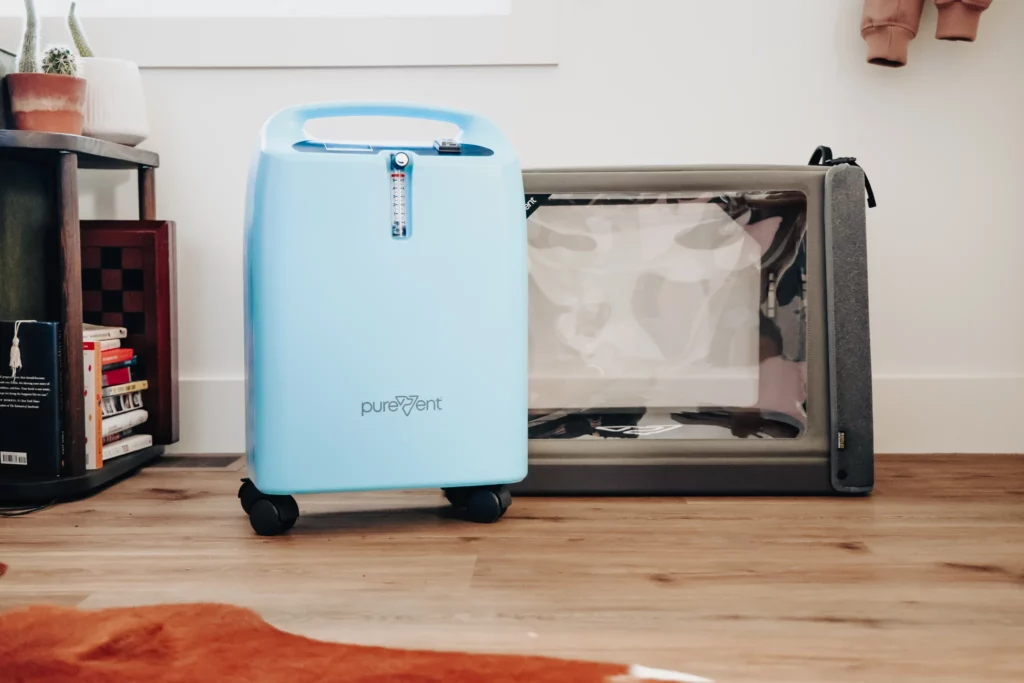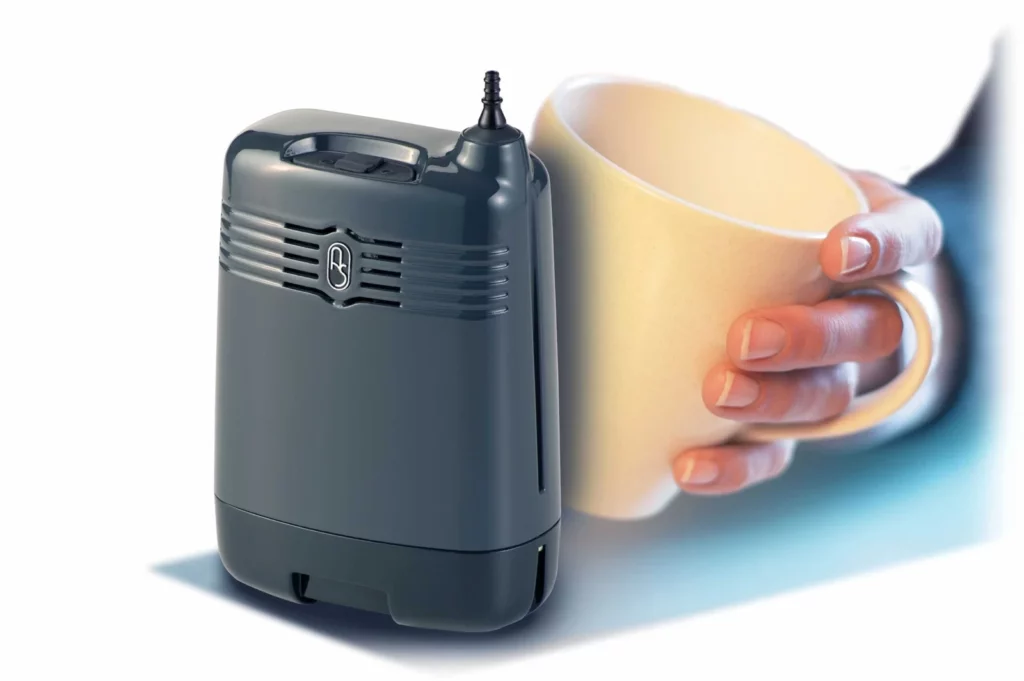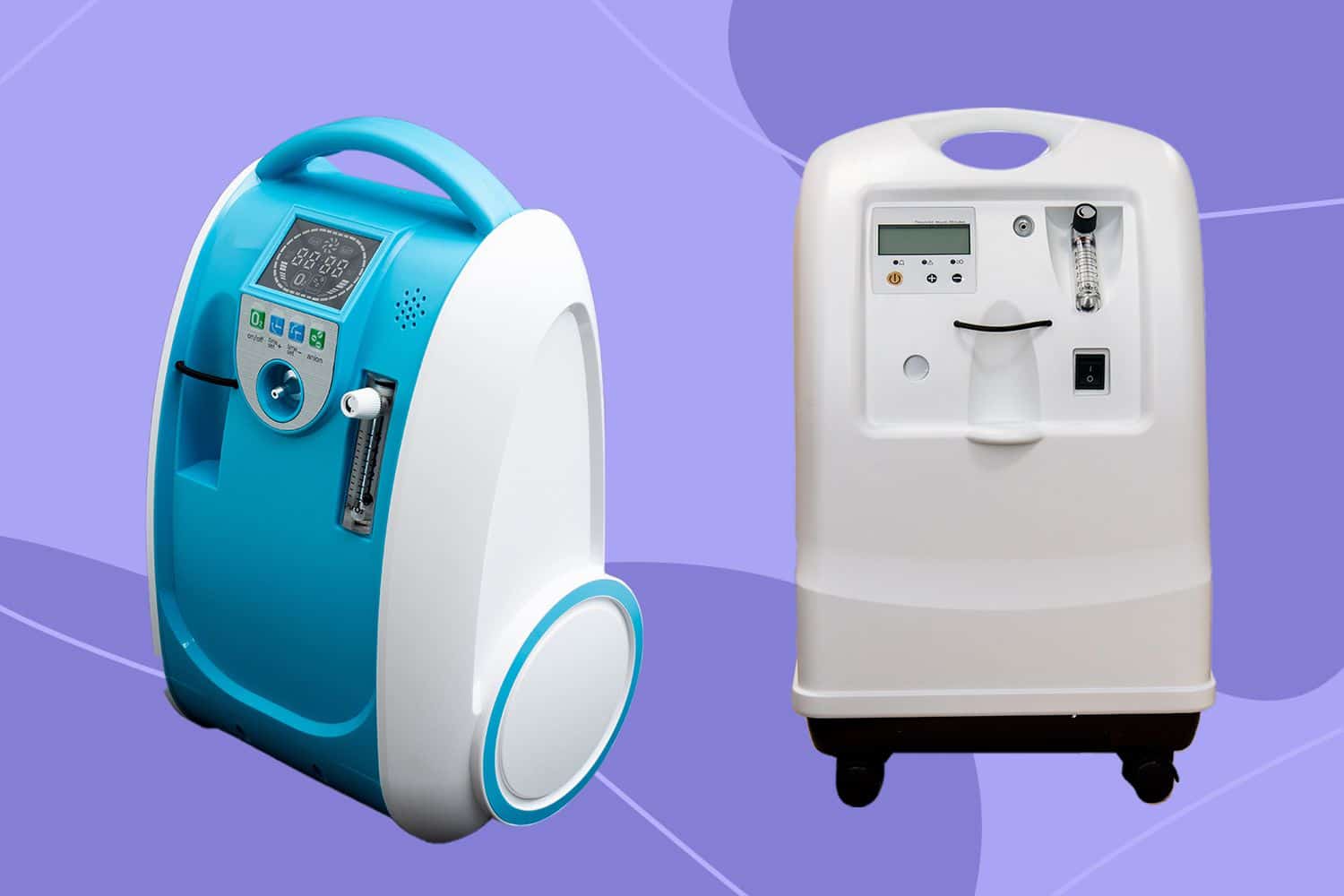Portable oxygen cylinders typically last around 4 hours on a single charge or fill, though this duration varies based on individual usage patterns and prescribed settings. These compact medical devices serve as lifelines for individuals managing chronic obstructive pulmonary disease (COPD), emphysema, pulmonary fibrosis, and other respiratory conditions requiring supplemental oxygen therapy.
The significance of portable oxygen cylinders extends beyond mere medical necessity. They represent freedom and independence for patients who would otherwise be confined to stationary oxygen systems. Whether attending family gatherings, running errands, or simply enjoying a walk outdoors, these devices enable users to maintain active lifestyles whilst receiving continuous oxygen support.
Understanding portable oxygen cylinder duration becomes essential for effective treatment planning. Patients need reliable information to:
- Schedule daily activities without risking oxygen depletion
- Plan backup supplies for extended outings
- Budget for refills or recharging requirements
- Coordinate with healthcare providers for optimal therapy management
The portable oxygen cylinder battery life question doesn’t have a one-size-fits-all answer. Multiple variables influence how long your device remains functional between charges or refills. Flow rate settings, frequency of use, device type, and individual breathing patterns all play crucial roles in determining actual runtime. This article explores these factors in depth, providing practical guidance for maximising your portable oxygen system’s effectiveness.
What Factors Influence How Long a Portable Oxygen Cylinder Lasts?
The oxygen flow rate serves as the primary determinant of cylinder duration. Healthcare professionals prescribe this rate measured in litres per minute (LPM), calibrating it to match each patient’s specific respiratory requirements and blood oxygen saturation levels.
A patient prescribed 2 LPM will deplete their oxygen supply twice as quickly as someone using 1 LPM. The mathematics is straightforward: higher prescribed oxygen flow rates consume the finite oxygen supply within the cylinder at an accelerated pace. A standard portable cylinder containing 415 litres of oxygen at 2 LPM will last approximately 3.5 hours, whilst the same cylinder at 4 LPM will only provide roughly 1.75 hours of use.
How Usage Patterns Affect Cylinder Longevity
The frequency and duration of oxygen therapy sessions directly correlate with how quickly users exhaust their supply. Patients requiring continuous oxygen therapy throughout the day will naturally need more frequent refills or recharges compared to those who only use supplemental oxygen during specific activities like exercise or sleep.
Oxygen usage factors extend beyond simple flow rates:
- Activity level: Physical exertion increases oxygen demand, potentially requiring higher flow settings during movement
- Altitude: Higher elevations may necessitate increased oxygen delivery to maintain adequate saturation
- Breathing patterns: Pulse-dose delivery systems that release oxygen only during inhalation can extend cylinder life compared to continuous flow
- Environmental conditions: Temperature extremes can affect cylinder pressure and oxygen delivery efficiency
Understanding Your Individual Consumption Rate
Each patient’s oxygen consumption creates a unique usage profile. Someone who uses their portable cylinder exclusively for short trips to the shops will experience vastly different refill frequencies compared to an individual who relies on supplemental oxygen during an eight-hour work shift.
The cylinder’s capacity, typically measured in litres, works in tandem with the prescribed flow rate to determine available therapy time. A 415-litre cylinder at 1 LPM theoretically provides nearly seven hours of oxygen, yet real-world conditions often reduce this duration. Patients should track their actual usage patterns to develop realistic expectations about when refills or recharges become necessary.
Understanding these aspects can greatly enhance the management of portable oxygen therapy, ensuring patients make the most efficient use of their resources while meeting their medical needs effectively.
How Long Does a Typical Portable Oxygen Cylinder Last on One Charge or Fill?
A fully charged or filled portable oxygen cylinder typically provides approximately 4 hours of oxygen supply under standard usage conditions. This typical oxygen cylinder duration serves as a baseline expectation for most users managing their respiratory therapy needs throughout the day.
The 4-hour estimate represents an average scenario where patients use their device at moderate flow settings prescribed by their healthcare provider. Real-world performance can differ significantly based on individual usage patterns. A patient requiring a flow rate of 2 litres per minute will experience different battery performance compared to someone prescribed 4 or 5 litres per minute.
Key variables affecting actual duration include:
- Prescribed flow rate – Higher settings deplete oxygen supplies more rapidly
- Continuous versus pulse-dose delivery – Pulse-dose systems conserve oxygen by delivering it only during inhalation
- Activity level – Physical exertion increases oxygen demand and consumption
- Altitude – Higher elevations may require adjusted flow rates
- Device age and condition – Older equipment may not perform at peak efficiency
The average battery life portable oxygen devices offer depends heavily on these factors. A patient using their cylinder at a flow rate of 1 litre per minute during rest might achieve 6-8 hours, whilst someone requiring 4 litres per minute during physical activity could see their supply depleted in 2-3 hours.
Manufacturers provide duration charts specific to each model, detailing expected performance at various flow settings. These charts serve as valuable planning tools for patients coordinating their daily activities around oxygen availability. Patients should always carry backup supplies or plan recharging opportunities when venturing away from home for extended periods.
How Does Battery Life Vary Among Portable Oxygen Concentrators (POCs)?
Portable oxygen concentrators offer an alternative to traditional cylinders, operating on rechargeable batteries rather than compressed gas. These devices extract oxygen from ambient air and deliver it to users, eliminating the need for frequent refills. The shift from cylinders to POCs represents a significant advancement in mobility and convenience for oxygen therapy patients.
Battery capacity determines how long a POC operates between charges, with performance varying dramatically across different models. Manufacturers design POCs with varying battery sizes, directly impacting portable oxygen concentrator battery life. Devices equipped with larger battery capacities naturally provide extended operation times, whilst compact models with smaller batteries may require more frequent charging throughout the day.
Single Battery Performance
At moderate flow settings, single-battery POCs typically deliver between 2.7 and 4.9 hours of operation. This POC battery duration applies specifically to flow setting 2, which represents a common prescription level for many oxygen therapy patients. The range exists because different manufacturers use varying battery technologies and power management systems.
Specific examples include:
- Entry-level models: approximately 2.7-3.5 hours at flow setting 2
- Mid-range devices: around 3.5-4 hours at flow setting 2
- Premium units: up to 4.9 hours at flow setting 2
Dual Battery Configurations
Double battery systems effectively double operational time, providing approximately 4.5 to 10.3 hours at flow setting 2. This extended duration allows users to spend entire days away from power sources without anxiety about running out of oxygen. Many POC manufacturers offer dual battery options either as standard equipment or available upgrades.
The flow settings battery impact becomes particularly evident when comparing different oxygen delivery rates. Higher flow settings (3, 4, or 5) consume significantly more power, reducing battery life by 30-50% compared to lower settings. Users prescribed higher flow rates should account for this reduction when planning daily activities.

Factors Affecting Battery Life
Battery age and charging habits also affect POC battery duration. Lithium-ion batteries, standard in most POCs, gradually lose capacity over time if not properly maintained. To help maintain optimal performance throughout the lifespan of the device, it’s crucial to follow best practices for prolonging lithium-based batteries.
Additionally, users may encounter battery issues in portable oxygen concentrators such as reduced lifespan or unexpected shutdowns due to various causes including poor charging habits or age of the battery. Understanding these factors can help users make informed decisions regarding their POC usage and maintenance.
What Should Users Consider When Choosing a Portable Oxygen Unit?
Choosing a portable oxygen device requires careful evaluation of multiple factors that directly impact daily functionality and treatment effectiveness. The right unit should seamlessly integrate into your routine whilst meeting prescribed oxygen therapy requirements without compromise.
Device Size and Weight
Device size and weight significantly affect portability and ease of use. Lighter units (typically 2-5 kg) allow for extended wear without physical strain, making them ideal for active individuals who travel frequently or maintain busy schedules. Heavier models may offer longer battery life but can restrict mobility and cause fatigue during prolonged use. Consider whether you’ll primarily use the device at home, during short trips, or for extended travel when evaluating weight specifications.
Oxygen Therapy Requirements
Oxygen therapy requirements form the foundation of device selection. Your prescribed flow rate determines which models can adequately support your treatment plan. Some devices accommodate continuous flow settings, whilst others provide pulse dose delivery. Verify that any unit under consideration can deliver your prescribed oxygen levels consistently across all anticipated activities, from rest to moderate exercise.
Battery Capacity
Battery capacity directly correlates with independence between charges. Users requiring higher flow rates or extended periods away from power sources need models with larger battery capacities or the option to carry spare batteries. Calculate your typical daily usage patterns to ensure the device can sustain your needs without frequent recharging interruptions.
Additional Considerations
Additional considerations include:
- Noise levels during operation, particularly important for social settings or sleep
- Ease of controls and display readability for users with dexterity or vision limitations
- Warranty coverage and availability of technical support
- Maintenance requirements and replacement part costs
- Airline approval certification if air travel is anticipated
Your lifestyle patterns should guide the selection process. Active users benefit from compact, lightweight models with reliable battery performance, whilst those with primarily stationary routines may prioritise extended runtime over portability.
What Are the Essential Safety Precautions for Using Portable Oxygen Cylinders?
Portable oxygen safety requires strict adherence to fire prevention protocols and proper equipment handling. Oxygen accelerates combustion, making even small sparks or heat sources potentially dangerous when oxygen equipment is nearby.
Critical Fire Safety Measures
Users must maintain a minimum distance of 5 feet (1.5 metres) between their oxygen equipment and any open flames, including:
- Candles and fireplaces
- Gas stoves and cooking appliances
- Cigarettes, cigars, and smoking materials
- Matches and lighters
- Space heaters and radiators
The “No Smoking” rule extends beyond the user themselves. Anyone in the vicinity must refrain from smoking, as oxygen-enriched environments dramatically increase fire risk. Posting clear “Oxygen in Use” signs serves as an effective reminder for visitors and household members.
Proper Storage and Handling
Oxygen equipment precautions extend to everyday storage and use. Cylinders should always remain upright and secured to prevent tipping or rolling, which could damage valves or connections. Storing units in well-ventilated areas prevents oxygen accumulation in enclosed spaces.
Users should avoid exposing equipment to extreme temperatures. Direct sunlight, hot vehicles, or freezing conditions can compromise cylinder integrity and battery performance in concentrators. Keeping devices in climate-controlled environments ensures optimal functionality. Click here to get more about portable Oxygen Concentrator and how does it work?
Equipment Maintenance and Care
Safe handling of oxygen devices includes regular inspection of tubing, connections, and masks for wear or damage. Cracked tubing or loose fittings can lead to oxygen leaks, creating safety hazards and reducing therapy effectiveness.
Cleaning equipment according to manufacturer guidelines prevents bacterial growth and ensures hygienic use. Using only approved cleaning solutions protects device components from damage. Users should never apply petroleum-based products, oils, or greasy substances near oxygen equipment, as these materials become highly flammable in oxygen-rich environments.
Electrical safety matters equally for concentrator users. Keeping devices away from water sources and ensuring proper grounding reduces electrical hazards during operation.
In addition to these precautions, it’s essential to follow comprehensive safety protocols that encompass all aspects of portable oxygen usage. These guidelines provide a broader understanding of safety measures necessary for maintaining health while using such medical equipment.

Conclusion
How long does a portable oxygen cylinder last on one charge? The answer depends on your prescribed flow rate, device type, and usage patterns—but understanding these variables empowers you to manage your oxygen supply duration effectively.
Portable oxygen cylinders and concentrators serve as lifelines for individuals requiring supplemental oxygen therapy. The duration of use varies significantly, from approximately 4 hours for traditional cylinders to extended periods with POCs equipped with dual batteries. Your specific needs will determine which solution works best for your lifestyle.
Making informed decisions about your oxygen therapy requires professional guidance. Healthcare providers can assess your medical requirements, activity levels, and mobility needs to recommend the most suitable device. They’ll help you understand:
- The appropriate flow rate for your condition
- Which device model offers adequate battery life for your daily routine
- How to balance portability with oxygen supply duration
- Proper maintenance schedules to ensure reliable performance
Don’t navigate these choices alone. Schedule a consultation with your respiratory therapist or pulmonologist to discuss your portable oxygen options. They can provide personalised recommendations that account for both your medical needs and lifestyle preferences, ensuring you maintain independence whilst receiving effective oxygen therapy.
Ready to optimise your oxygen therapy? Contact your healthcare team today to explore portable oxygen solutions tailored specifically to your requirements.
FAQs about portable oxygen cylinders
A typical portable oxygen cylinder lasts around 4 hours, depending on flow rate and usage.
2. What factors affect how long my oxygen cylinder lasts?
Duration depends on flow rate, activity level, altitude, and breathing pattern.
3. Does using a higher flow rate reduce cylinder life?
Yes. Higher flow rates consume oxygen faster and shorten runtime.
4. How can I make my portable oxygen last longer?
Use pulse-dose mode, take breaks when possible, and avoid unnecessary oxygen use.
5. How does battery life vary among portable oxygen concentrators (POCs)?
Most POCs last 2.5–5 hours per battery at moderate flow settings; dual batteries double this time.
6. What should I consider when choosing a portable oxygen unit?
Check weight, flow rate compatibility, battery life, and noise level before buying.
7. Are portable oxygen cylinders safe to use indoors?
Yes, but always keep them away from flames, heat sources, and smoking areas.
8. How should I store my portable oxygen cylinder?
Keep it upright, secured, and in a cool, ventilated area away from direct sunlight.
9. Who should I consult before buying or using portable oxygen equipment?
Always consult your doctor or respiratory therapist for proper flow rate and device selection.


